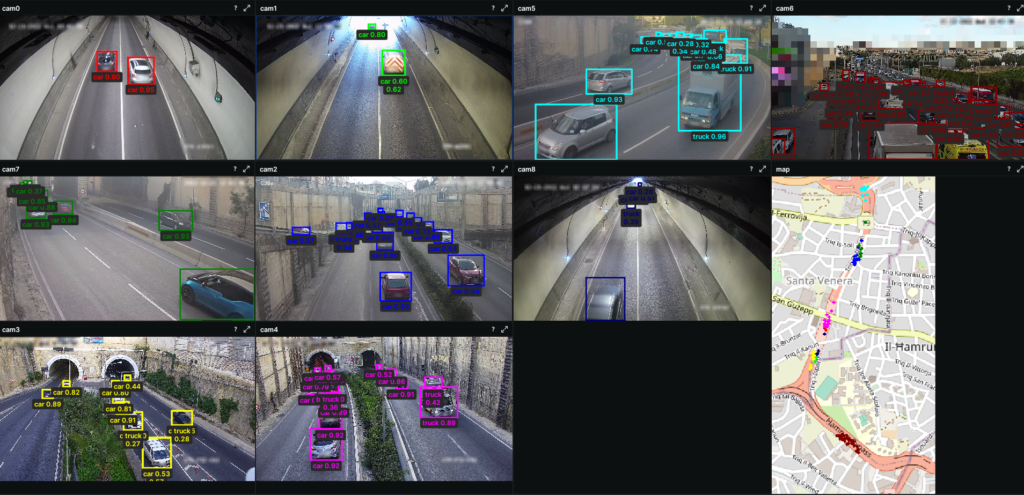This project sought to address Malta’s growing traffic congestion problem by developing an advanced traffic-monitoring system that would apply cutting-edge computer vision and machine learning (ML) techniques. With an annual cost of approximately €274 million incurred as a result of traffic congestion, Malta requires an innovative solution that could provide real-time insights into traffic patterns. This would assist the relevant authorities in making informed decisions towards more effective traffic management and congestion alleviation.
The proposed solution incorporates a multi-camera surveillance system that could detect and track vehicles in real time. This system utilises state-of-the-art object detection and tracking algorithms, alongside a convolutional neural network (CNN) specifically trained to recognise similarities between cars. This combination of technologies would allow the system to track vehicles accurately as they move between camera views, providing valuable data for predicting car movements and identifying potential congestion hotspots.
Developing such a system presented a number of challenges. One of the primary difficulties was predicting the trajectory of cars moving between cameras, which would require accurate estimations of a car’s path while out of view. Additionally, re-identifying cars across different camera views presented another challenge, as it involved comparing images of the same car from multiple angles using a CNN. By employing advanced computer vision and ML techniques, these challenges were addressed satisfactorily, ensuring that the system would be able to provide reliable traffic data and predictions.
The proposed traffic monitoring system offers various key benefits, which include: real-time analysis of traffic patterns; identification of weak points in the infrastructure; and visualisation of traffic data. A user-friendly interface would allow traffic management personnel to access and analyse this information easily, leading to more efficient strategies and decision-making processes.
To assess the effectiveness of the developed system, traffic data generated by the computer vision system was compared to data collected from existing traffic-analysis systems and manual counts performed by human observers. This evaluation aimed at determining the accuracy, reliability, and overall usefulness of the system for traffic management and congestion analysis.
In addition to addressing the technical challenges of the project, the system’s architecture was designed to support multiple cameras without significantly increasing hardware costs. This would ensure that the overall system remains cost-effective, providing a good return on investment while delivering real-time tracking and analysis of traffic flow.
In conclusion, the traffic-monitoring system presented in this project has been designed with the objective of significantly improving traffic management in Malta, while simultaneously reducing the economic and environmental costs of traffic congestion. By utilising cutting-edge computer vision and ML techniques, the system provides real-time traffic data and predictions, enabling better infrastructure planning and decision-making. The proposed solution contributes towards a more efficient, environmentally friendly, and cost-effective future for Malta’s transportation system, thus being an attractive option for addressing the country’s traffic congestion challenges.

Figure 1. Sample of object detection and the charting of vehicles on a map
Student: Michael Debono
Supervisor: Prof. Kristian Zarb Adami
